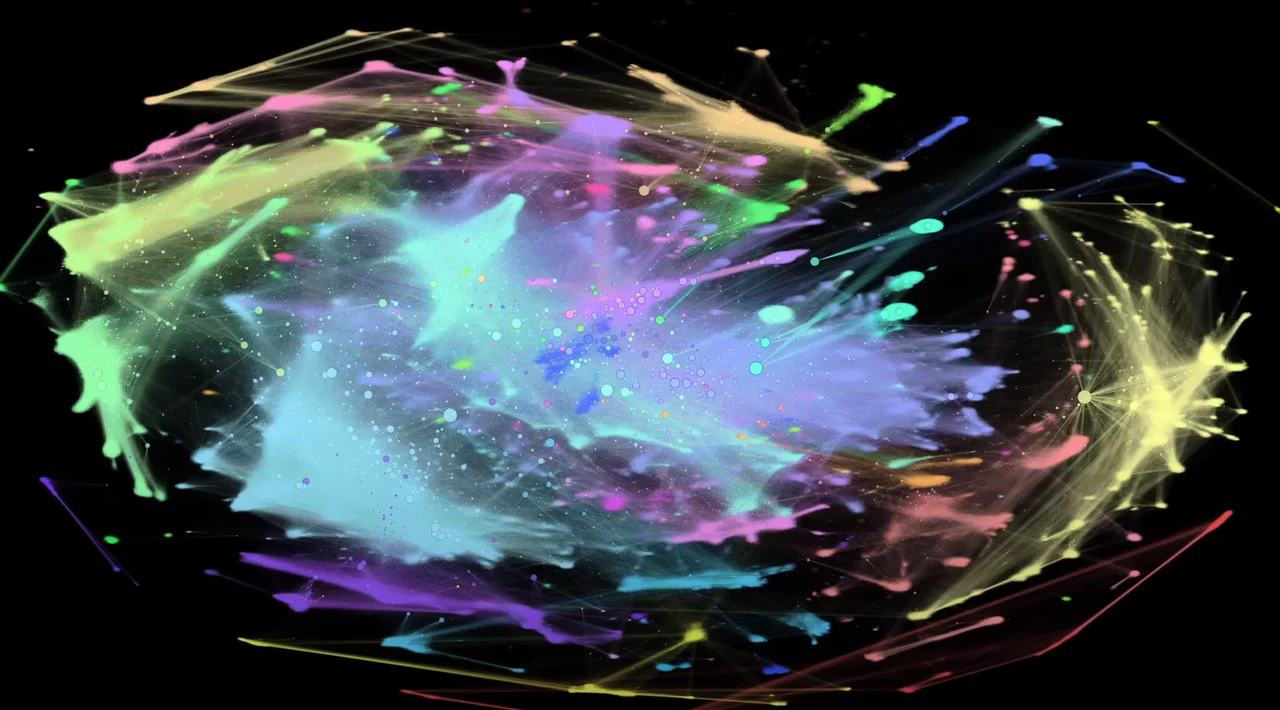When using Wikipedia you may not have given much thought to the intricate web that forms the web-based encyclopedia. However a newly created visual graph representation of Wikipedia created by Adumb offers a compelling glimpse into the vast network of over 6.3 million articles and their nearly 200 million connecting links. This isn’t merely a diagram; it’s a dynamic map that illustrates the rich tapestry of knowledge and how different subjects interweave. The visual representation showcases the complex relationships between articles, revealing the depth and breadth of information available on the platform.
Central to this graph are 44 unique communities, each emerging algorithmically from the web of connections. These clusters group articles by common themes, such as technology, history, or science, creating ‘neighborhoods’ within the larger Wikipedia landscape. The prominence of an article within this network is indicated by the size of its circle, which reflects the volume of incoming links. For instance, the United States article boasts the highest number of links, reflecting the country’s widespread influence and the abundance of English-language contributors. These communities and neighborhoods provide a fascinating insight into how knowledge is organized and interconnected within Wikipedia.
Wikipedia Visual Connection Graph
To learn more about the interesting connections across articles within Wikipedia watch the video below kindly created by Adumb the researcher and creator of the visual graph which revealed 44 unique communities consisting of millions of Wikipedia articles.
Here are some other articles you may find of interest on the subject of knowledge :
The graph’s value extends beyond mere size comparisons. It highlights the playful nature of Wikipedia through the ‘Wikipedia race,’ where users navigate from one article to another, emphasizing the network’s density. This engaging activity showcases the ease with which one can explore and discover new information within the Wikipedia ecosystem. Despite the general interconnectedness, the graph also points out the less-traveled corners of Wikipedia. Orphaned articles, lacking inbound links, and dead-end articles, with no outbound links, underscore the knowledge gaps that exist within this digital encyclopedia. Nevertheless, the concept of ‘Six Degrees of Separation’ is largely applicable here, with most articles being accessible within six clicks or less, highlighting the surprising proximity of seemingly disparate topics.
Continual Change
Wikipedia’s fluid nature means that this visual graph is continuously changing, mirroring the ebb and flow of knowledge as articles are added or revised. This results in a shifting hierarchy of information, with some topics gaining prominence and others receding into the background. The average path length between any two Wikipedia articles is surprisingly short, at just 4.8 links. This suggests a closer-knit information landscape than one might assume. The graph also reveals extremes, such as the longest path of 166 links and the once self-referencing ‘Fanta cake’ article, highlighting Wikipedia’s idiosyncrasies and the occasional quirks that emerge from collaborative editing.
The visual representation of the English Wikipedia is more than a mere analytical tool; it’s a reflection of the collective curiosity and intellectual contributions of millions. It stands as a symbol of collaborative effort and the relentless quest for understanding that is central to the human condition. As you navigate from one Wikipedia article to another, you’re journeying through a digital ecosystem as intricate and interconnected as the real world it seeks to encapsulate. This visual exploration invites us to appreciate the vast wealth of knowledge at our fingertips and the power of collective wisdom in shaping our understanding of the world around us.
Image Credit : Adumb
Filed Under: Guides, Top News
Latest TechMehow Deals
Disclosure: Some of our articles include affiliate links. If you buy something through one of these links, TechMehow may earn an affiliate commission. Learn about our Disclosure Policy.
